“With so many looms, how do you decide what to weave every day?,” I was asked. The answer lies in my Weaving Rhythm. I have five floor looms. I happily aspire to meet the challenge of keeping all of them active.
Glossary
Weaving Rhythm ~ A pattern created across time, through a regular succession of weaving-related tasks.
Arrange individual tasks to keep each loom consistently moving forward in the weaving continuum.
Weaving Continuum ~ The cycle for each loom that is continually repeated.
When the first few centimeters are woven on a new project, begin planning the next project. When finishing is completed for the current project, wind a new warp and dress the loom for the next project.
First Things First ~ Prioritize daily tasks to maintain the Weaving Rhythm.
- Finishing
- Dressing
- Weaving
Do some finishing work first. Do some loom-dressing tasks next. The reward, then, is sitting at one of the dressed looms and freely weaving for the pleasure of it.
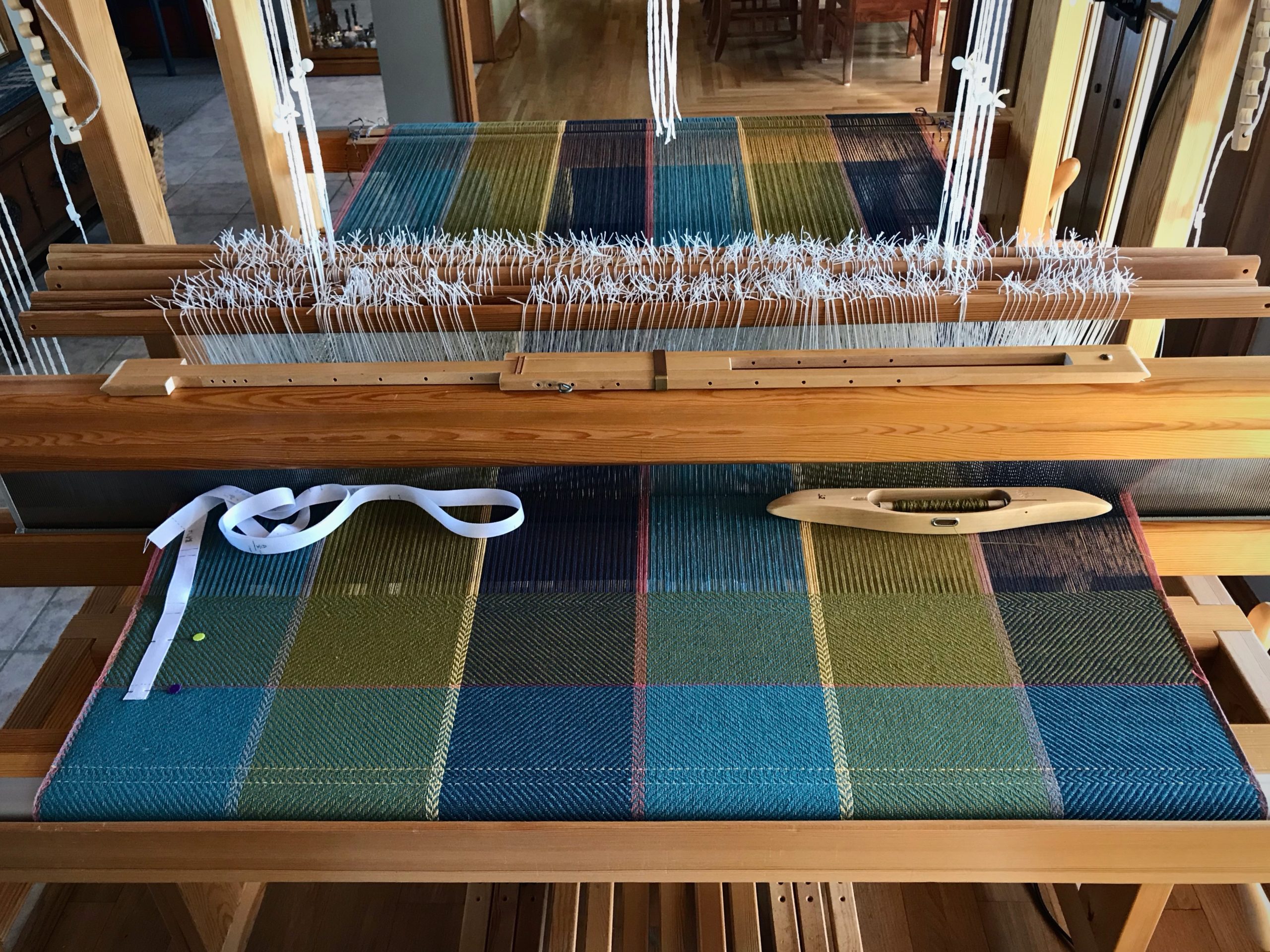
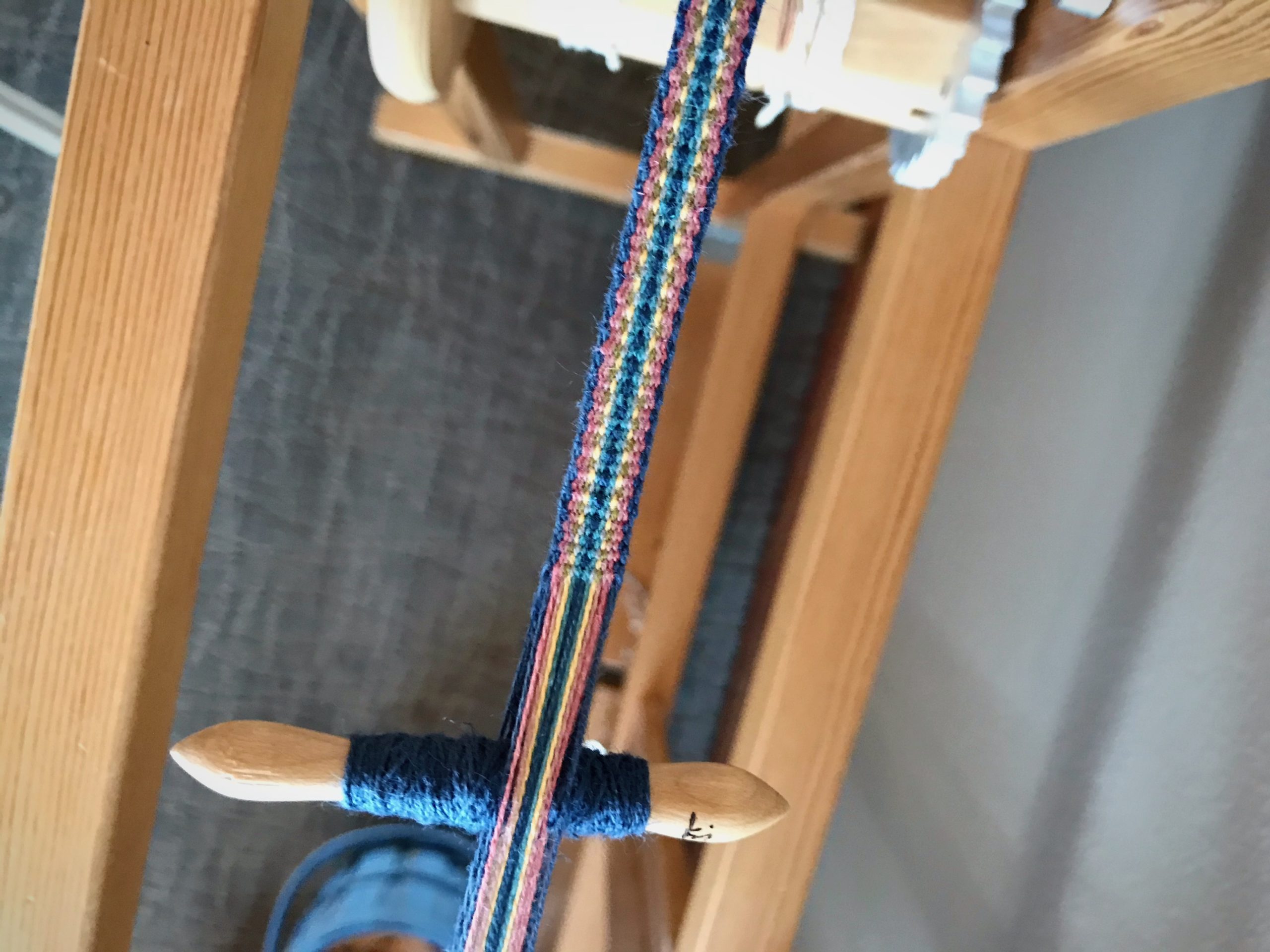
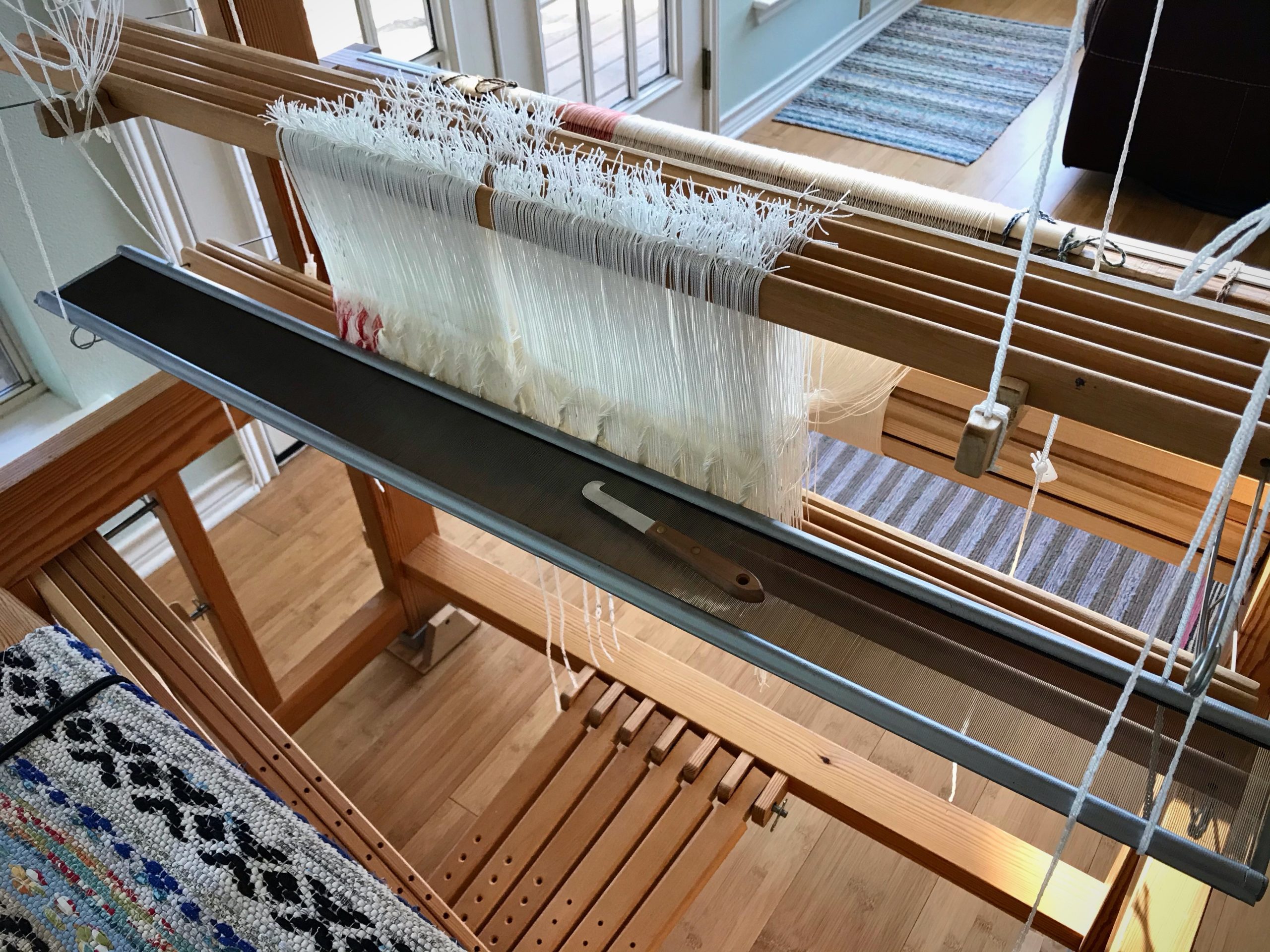
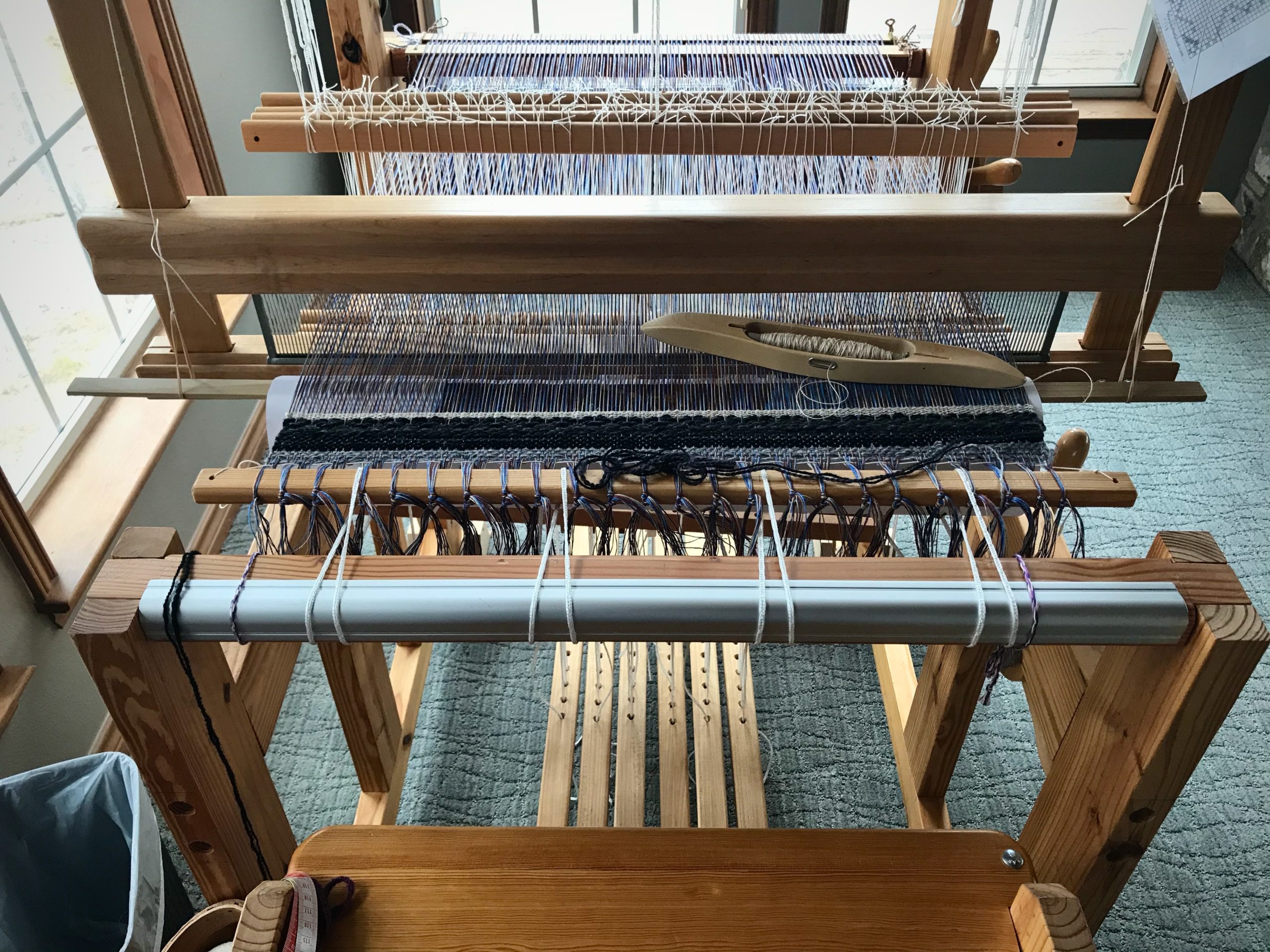
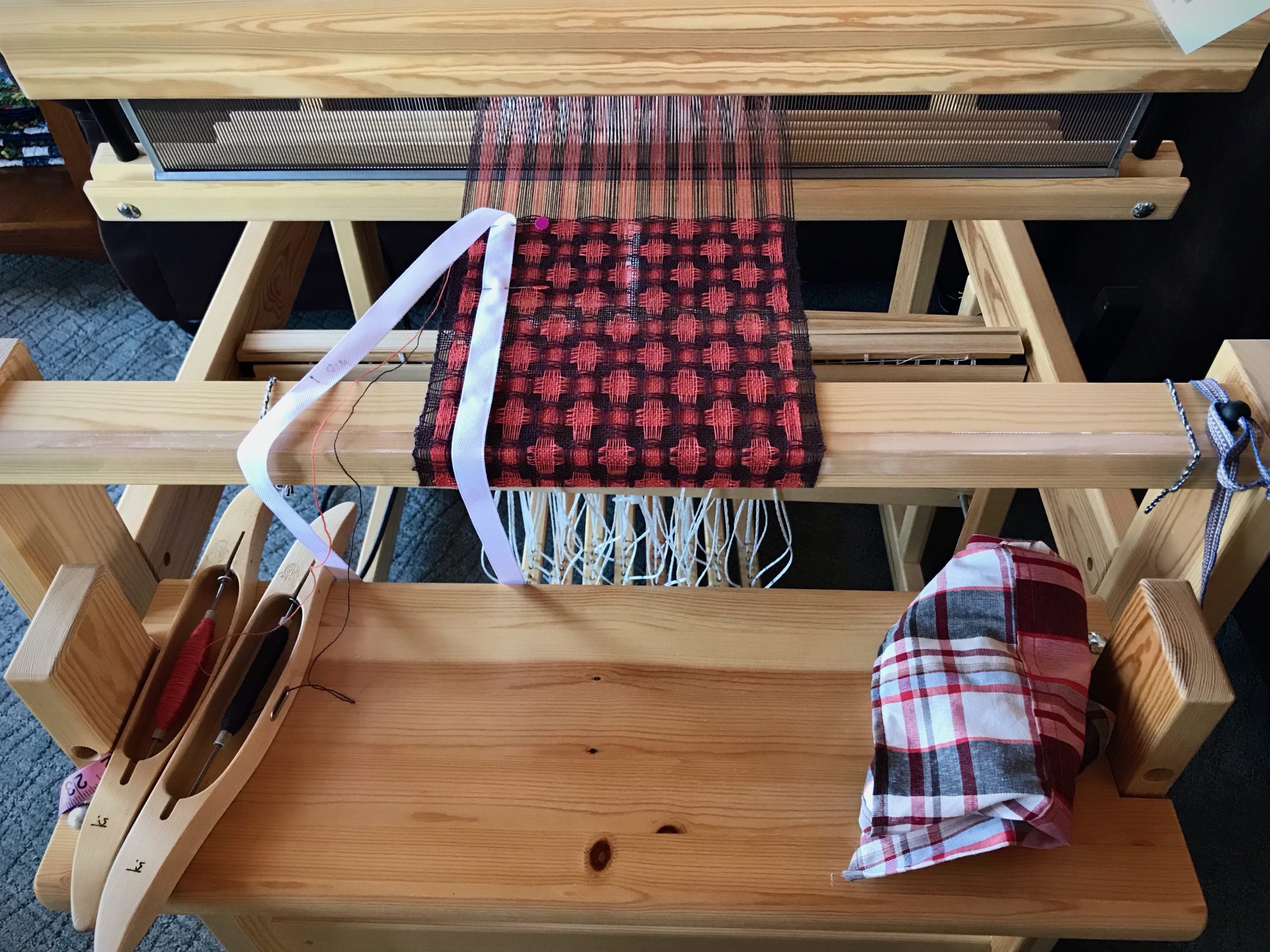
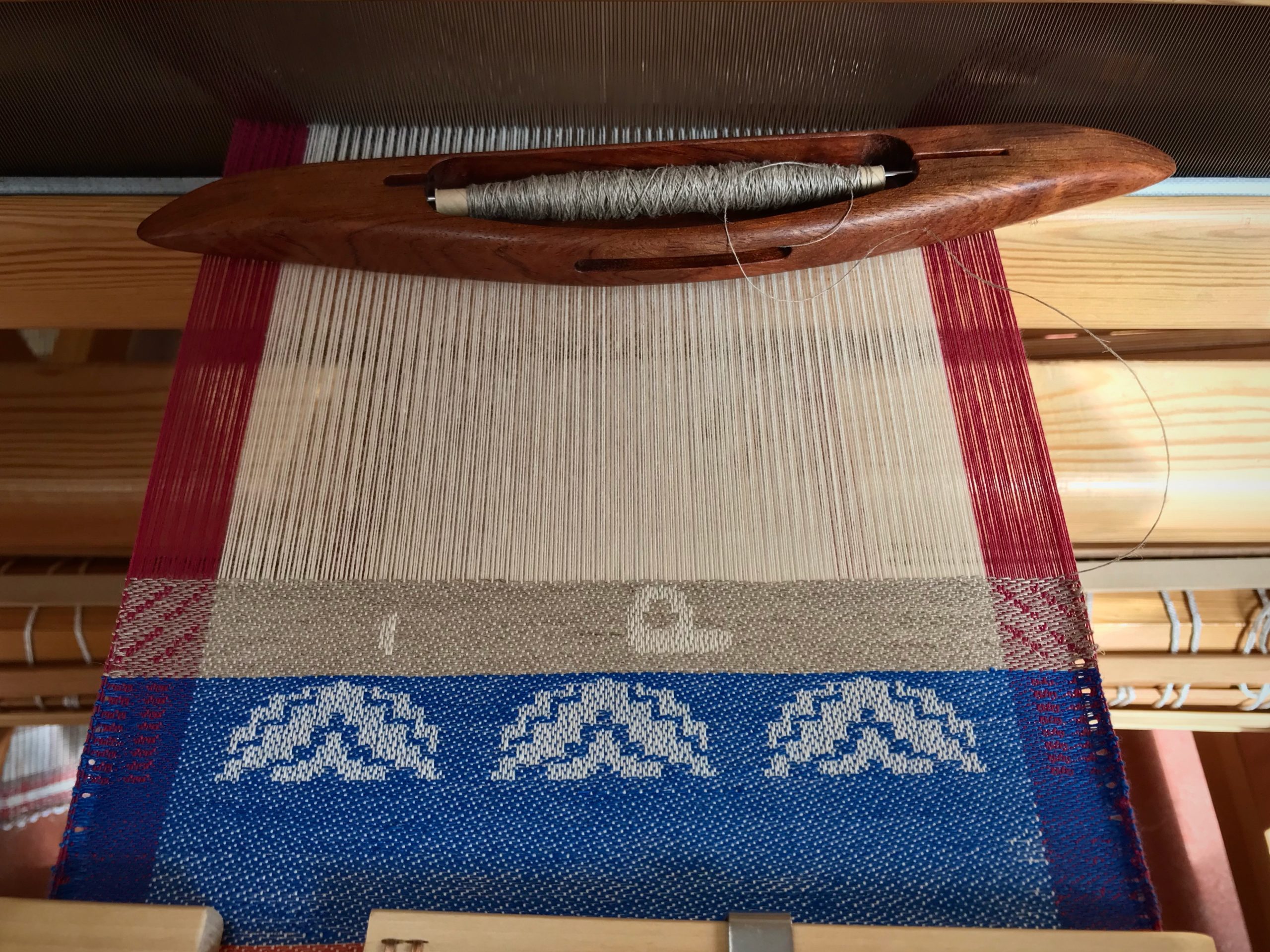
Give Thanks ~ Live with a thankful heart.
Every day I thank the Lord for granting me the joy of being in this handweaving journey. And I thank him for bringing friends like you along with me.
May you always give thanks.
With a grateful heart,
Karen

Your weaving is always an inspiration. I look forward to each post. Thank you.
Hi Den, Thank you for joining in with me.
All the best,
Karen
You amaze me! I have too many different hobbies and have to dedicate hours each day to different projects!
Hi Karen, You have some wonderful experiences with using your gifts. I have so much more I want to learn about weaving, and I enjoy digging in to this weaving arena.
Happy weaving and everything else,
Karen
I love your idea of a “weaving rhythm…” immersing oneself in a “weaving life” that will increase skills and enjoy the gifts weaving brings every day! I tend to weave as a “reward” after all the daily tasks are completed. unfortunately, weaving gets pushed to the back of the line and then I don’t weave as much as I would like to. This was eye-opening for me and I am going to try and find my “weaving rhythm!”
I really enjoy your blog!
Marianne
Hi Marianne, I like that you identified increasing skill and enjoying the gifts. That does explain why I focus on getting a good rhythm. There are always other necessary things to do to care for family and friends, but it’s good to be mindful of being stewards of the gifts we’ve been given, too. All of life deals with finding priorities and balance.
Thank you for your thoughtful words,
Karen
Thank you so much for inspiring me to think through my own processes and priorities! My challenge is that I make things in a variety of techniques: knitting, weaving, sewing, and quilting…I am so happy I eliminated the rest of them
Since I only have one floor loom I decided to think of these techniques as my “looms”. Each “loom” requires a slightly different process, and it was very useful to actually take the time to think through each of them, what part do I enjoy the most and what do I tend to put off. You have mentioned that you put finishing first to make sure it gets done. It is interesting how people are different, finishing is the easiest part for me, while dressing the loom tends to be put off, even with a warp waiting.
Another interesting part for me is to pay attention to which of the different technique requires almost no motivation to get going. Do you see a difference when it comes to your looms? Or the kind of projects you are working on?
Thank you again for inspiring me to learn and grow!
Love, Elisabeth
Hi Elisabeth, From one thinker to another… There’s a fascination to figuring out structures and processes in life. I’m glad to hear this post prompted you to think through some things. You have certainly helped me to think through things, too.
As far as motivation on different sorts of projects, I do find that I tend to be drawn to the fascination of the drawloom, to weaving a tapestry, and to weaving rag rugs. I need no motivation for those at all. Even so, I find enjoyment in every stage of the process on every one of the looms.
Thanks for helping me think,
Karen
Wow, impressive! You are clearly an inspiration. I am curious about the drawloom; I thought you could only add a drawloom to a VERTICAL countermarch loom.
Thanks,
Pam
Hi Pam, It is certainly easier to add a drawloom to a vertical countermarch. We (meaning Steve) modified the horizontal countermarch to fit with the drawloom frame.
All the best,
Karen
Happy Thanksgiving, Karen!
Hi Beth, Happy Thanksgiving to you, too!
Karen
Hello. I liked reading your posts a lot and here last I can see that you have a Glimåkra Ideal, I have the same. Unfortunately, I have a lot of problems getting the scales accurately, even though I know how to regulate various things. Maybe you can help me. Do you have an approximate measure of the basic binding to the Ideal loom. That is, the measure from shaft to short stool, the measure from short stool to long stool, the measure from long stool to tramp. Just like that, as a guide. Thanks in advance. Sincerely, Helen Pedersen.
Hello Helen, Yes, I have a Glimåkra Ideal. Approximate measurements – from bottom of shafts to the short lamms is about 18cm, from short lamms to long lamms is about 18cm, from long lamms to treadles is about 23cm. The warp is not tied on yet, so these measurements are not exact.
How many shafts are you using? Sometimes with more than 4 shafts, it is a little tricky to get everything to balance.
Thank you,
Karen
Hello. Thanks for your reply. I will check if your measurements fit my loom. Right Now I am using 4 axles and 6 pedals.
Hi Karen,
I noticed you begin planning the next project while weaving the current project.
Just one future project? 😉
HAPPY THANKSGIVING!!!!
Nannette
Hi Nannette, One project at a time (per loom) is enough for me. 🙂
Happy Thanksgiving to you!
Karen
Amen xoxo
One Question ? Do you keep them all warped and working,Simultaneously ??
Or one at a time ?
Hi Angela, Each loom is on its own independent schedule. They are rarely synchronized so that they are all in weaving mode at the same time. Usually, the looms are operating in different phases of the weaving continuum. So, each day I decide which loom to focus on next. I can only weave on one loom at a time, so sometimes a warp sits on the loom for a while until I can get back to it.
All the best,
Karen
Hi Karen,
I have a similar process, and have three looms that are usually active.
When I was a fairly new weaver, I remember Anita Meyer saying that she has one project in the planning stage, one project in the weaving stage and one project in the finishing stage, and then working within the rhythms of her days. I follow a similar rhythm and it keeps me happy. I also have a fourth stage which is documentation and learning. Documentation so that I don’t forget what I have done, and learning because learning is a continuous lifelong adventure.
Thanks for the inspiration today.
Barbara
Hi Barbara, You have a great system. Documentation is important, yes. I include it in my finishing stage. And I’m with you, learning is a lifelong adventure!
Thanks for your great input,
Karen